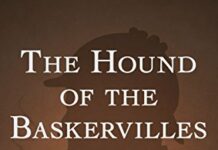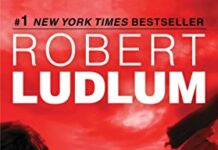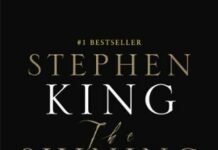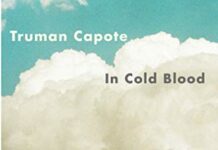
Ebook Info
- Published: 2003
- Number of pages: 496 pages
- Format: Epub
- File Size: 0.66 MB
- Authors: Dan Brown
Description
As millions of readers around the globe have already discovered, The Da Vinci Code is a reading experience unlike any other. Simultaneously lightning-paced, intelligent, and intricately layered with remarkable research and detail, Dan Brown’s novel is a thrilling masterpiece—from its opening pages to its stunning conclusion.
User’s Reviews
Review “Read the book and be enlightened.” —The Washington Post Book World“Blockbuster perfection. . . . A gleefully erudite suspense novel.”—The New York Times“A pulse-quickening, brain-teasing adventure.” —People“Thriller writing doesn’t get any better than this.” —The Denver PostFrom the Trade Paperback edition. Amazon.com Review With The Da Vinci Code, Dan Brown masterfully concocts an intelligent and lucid thriller that marries the gusto of an international murder mystery with a collection of fascinating esoteria culled from 2,000 years of Western history. A murder in the silent after-hour halls of the Louvre museum reveals a sinister plot to uncover a secret that has been protected by a clandestine society since the days of Christ. The victim is a high-ranking agent of this ancient society who, in the moments before his death, manages to leave gruesome clues at the scene that only his granddaughter, noted cryptographer Sophie Neveu, and Robert Langdon, a famed symbologist, can untangle. The duo become both suspects and detectives searching for not only Neveu’s grandfather’s murderer but also the stunning secret of the ages he was charged to protect. Mere steps ahead of the authorities and the deadly competition, the mystery leads Neveu and Langdon on a breathless flight through France, England, and history itself. Brown (Angels and Demons) has created a page-turning thriller that also provides an amazing interpretation of Western history. Brown’s hero and heroine embark on a lofty and intriguing exploration of some of Western culture’s greatest mysteries–from the nature of the Mona Lisa’s smile to the secret of the Holy Grail. Though some will quibble with the veracity of Brown’s conjectures, therein lies the fun. The Da Vinci Code is an enthralling read that provides rich food for thought. –Jeremy Pugh –This text refers to an alternate kindle_edition edition. From Publishers Weekly Brown’s latest thriller (after Angels and Demons)is an exhaustively researched page-turner about secret religious societies, ancient coverups and savage vengeance. The action kicks off in modern-day Paris with the murder of the Louvre’s chief curator, whose body is found laid out in symbolic repose at the foot of the Mona Lisa. Seizing control of the case are Sophie Neveu, a lovely French police cryptologist, and Harvard symbol expert Robert Langdon, reprising his role from Brown’s last book. The two find several puzzling codes at the murder scene, all of which form a treasure map to the fabled Holy Grail. As their search moves from France to England, Neveu and Langdon are confounded by two mysterious groups-the legendary Priory of Sion, a nearly 1,000-year-old secret society whose members have included Botticelli and Isaac Newton, and the conservative Catholic organization Opus Dei. Both have their own reasons for wanting to ensure that the Grail isn’t found. Brown sometimes ladles out too much religious history at the expense of pacing, and Langdon is a hero in desperate need of more chutzpah. Still, Brown has assembled a whopper of a plot that will please both conspiracy buffs and thriller addicts. –This text refers to an alternate kindle_edition edition. Excerpt. © Reprinted by permission. All rights reserved. 1Robert Langdon awoke slowly.A telephone was ringing in the darkness–a tinny, unfamiliar ring. He fumbled for the bedside lamp and turned it on. Squinting at his surroundings he saw a plush Renaissance bedroom with Louis XVI furniture, hand-frescoed walls, and a colossal mahogany four-poster bed.Where the hell am I?The jacquard bathrobe hanging on his bedpost bore the monogram: HOTEL RITZ PARIS.Slowly, the fog began to lift.Langdon picked up the receiver. “Hello?””Monsieur Langdon?” a man’s voice said. “I hope I have not awoken you?”Dazed, Langdon looked at the bedside clock. It was 12:32 A.M. He had been asleep only an hour, but he felt like the dead.”This is the concierge, monsieur. I apologize for this intrusion, but you have a visitor. He insists it is urgent.”Langdon still felt fuzzy. A visitor? His eyes focused now on a crumpled flyer on his bedside table.THE AMERICAN UNIVERSITY OF PARISproudly presentsAn evening with Robert LangdonProfessor of Religious Symbology, Harvard UniversityLangdon groaned. Tonight’s lecture–a slide show about pagan symbolism hidden in the stones of Chartres Cathedral–had probably ruffled some conservative feathers in the audience. Most likely, some religious scholar had trailed him home to pick a fight.”I’m sorry,” Langdon said, “but I’m very tired and–“”Mais monsieur,” the concierge pressed, lowering his voice to an urgent whisper. “Your guest is an important man.”Langdon had little doubt. His books on religious paintings and cult symbology had made him a reluctant celebrity in the art world, and last year Langdon’s visibility had increased a hundred-fold after his involvement in a widely publicized incident at the Vatican. Since then, the stream of self-important historians and art buffs arriving at his door had seemed never-ending.”If you would be so kind,” Langdon said, doing his best to remain polite, “could you take the man’s name and number, and tell him I’ll try to call him before I leave Paris on Tuesday? Thank you.” He hung up before the concierge could protest.Sitting up now, Langdon frowned at his bedside Guest Relations Handbook, whose cover boasted: SLEEP LIKE A BABY IN THE CITY OF LIGHTS. SLUMBER AT THE PARIS RITZ.He turned and gazed tiredly into the full-length mirror across the room. The man staring back at him was a stranger–tousled and weary.You need a vacation, Robert.The past year had taken a heavy toll on him, but he didn’t appreciate seeing proof in the mirror. His usually sharp blue eyes looked hazy and drawn tonight. A dark stubble was shrouding his strong jaw and dimpled chin. Around his temples, the gray highlights were advancing, making their way deeper into his thicket of coarse black hair. Although his female colleagues insisted the gray only accentuated his bookish appeal, Langdon knew better.If Boston Magazine could see me now.Last month, much to Langdon’s embarrassment, Boston Magazine had listed him as one of that city’s top ten most intriguing people–a dubious honor that made him the brunt of endless ribbing by his Harvard colleagues. Tonight, three thousand miles from home, the accolade had resurfaced to haunt him at the lecture he had given.”Ladies and gentlemen . . .” the hostess had announced to a full-house at The American University of Paris’s Pavillon Dauphine, “Our guest tonight needs no introduction. He is the author of numerous books: The Symbology of Secret Sects, The Art of the Illuminati, The Lost Language of Ideograms, and when I say he wrote the book on Religious Iconology, I mean that quite literally. Many of you use his textbooks in class.”The students in the crowd nodded enthusiastically.”I had planned to introduce him tonight by sharing his impressive curriculum vitae, however . . .” She glanced playfully at Langdon, who was seated onstage. “An audience member has just handed me a far more, shall we say . . . intriguing introduction.”She held up a copy of Boston Magazine.Langdon cringed. Where the hell did she get that?The hostess began reading choice excerpts from the inane article, and Langdon felt himself sinking lower and lower in his chair. Thirty seconds later, the crowd was grinning, and the woman showed no signs of letting up. “And Mr. Langdon’s refusal to speak publicly about his unusual role in last year’s Vatican conclave certainly wins him points on our intrigue-o-meter.” The hostess goaded the crowd. “Would you like to hear more?”The crowd applauded.Somebody stop her, Langdon pleaded as she dove into the article again.”Although Professor Langdon might not be considered hunk-handsome like some of our younger awardees, this forty-something academic has more than his share of scholarly allure. His captivating presence is punctuated by an unusually low, baritone speaking voice, which his female students describe as ‘chocolate for the ears.”The hall erupted in laughter.Langdon forced an awkward smile. He knew what came next–some ridiculous line about “Harrison Ford in Harris tweed”–and because this evening he had figured it was finally safe again to wear his Harris tweed and Burberry turtleneck, he decided to take action.”Thank you, Monique,” Langdon said, standing prematurely and edging her away from the podium. “Boston Magazine clearly has a gift for fiction.” He turned to the audience with an embarrassed sigh. “And if I find which one of you provided that article, I’ll have the consulate deport you.”The crowd laughed.”Well, folks, as you all know, I’m here tonight to talk about the power of symbols . . .”* * *The ringing of Langdon’s hotel phone once again broke the silence.Groaning in disbelief, he picked up. “Yes?”As expected, it was the concierge. “Mr. Langdon, again my apologies. I am calling to inform you that your guest is now en route to your room. I thought I should alert you.”Langdon was wide awake now. “You sent someone to my room?””I apologize, monsieur, but a man like this . . . I cannot presume the authority to stop him.””Who exactly is he?”But the concierge was gone.Almost immediately, a heavy fist pounded on Langdon’s door.Uncertain, Langdon slid off the bed, feeling his toes sink deep into the savonniere carpet. He donned the hotel bathrobe and moved toward the door. “Who is it?””Mr. Langdon? I need to speak with you.” The man’s English was accented–a sharp, authoritative bark. “My name is Lieutenant Jerome Collet. Direction Centrale Police Judiciaire.”Langdon paused. The Judicial Police? The DCPJ were the rough equivalent of the U.S. FBI.Leaving the security chain in place, Langdon opened the door a few inches. The face staring back at him was thin and washed out. The man was exceptionally lean, dressed in an official-looking blue uniform.”May I come in?” the agent asked.Langdon hesitated, feeling uncertain as the stranger’s sallow eyes studied him. “What is this is all about?””My capitaine requires your expertise in a private matter.””Now?” Langdon managed. “It’s after midnight.””Am I correct that you were scheduled to meet with curator of the Louvre this evening? “Langdon felt a sudden surge of uneasiness. He and the revered curator Jacques Saunière had been slated to meet for drinks after Langdon’s lecture tonight, but Saunière had never shown up. “Yes. How did you know that?””We found your name in his daily planner.””I trust nothing is wrong?”The agent gave a dire sigh and slid a Polaroid snapshot through the narrow opening in the door.When Langdon saw the photo, his entire body went rigid.”This photo was taken less than an hour ago. Inside the Louvre.” As Langdon stared at the bizarre image, his initial revulsion and shock gave way to a sudden upwelling of anger. “Who would do this!””We had hoped that you might help us answer that very question. Considering your knowledge in symbology and your plans to meet with him.”Langdon stared at the picture, his horror now laced with fear. The image was gruesome and profoundly strange, bringing with it an unsettling sense of deja vu. A little over a year ago, Langdon had received a photograph of a corpse and a similar request for help. Twenty-four hours later, he had almost lost his life inside Vatican City. This photo was entirely different, and yet something about the scenario felt disquietingly familiar.The agent checked his watch. “My captain is waiting, sir.”Langdon barely heard him. His eyes were still riveted on the picture. “This symbol here, and the way his body is so oddly . . .””Positioned?” the agent offered.Langdon nodded, feeling a chill as he looked up. “I can’t imagine who would do this to someone.”The agent looked grim. “You don’t understand, Mr. Langdon. What you see in this photograph . . .” He paused. “Monsieur Saunière did that to himself.”2One mile away, the hulking albino named Silas limped through the front gate of the luxurious brownstone residence on Rue la Bruyere. The spiked cilice belt that he wore around his thigh cut into his flesh, and yet his soul sang with satisfaction of service to the Lord.Pain is good.His red eyes scanned the lobby as he entered the residence. Empty. He climbed the stairs quietly, not wanting to awaken any of his fellow numeraries. His bedroom door was open; locks were forbidden here. He entered, closing the door behind him.The room was spartan–hardwood floors, a pine dresser, a canvas mat in the corner that served as his bed. He was a visitor here this week, and yet for many years he had been blessed with a similar sanctuary in New York City.The Lord has provided me shelter and purpose in my life.Tonight, at last, Silas felt he had begun to repay his debt. Hurrying to the dresser, he found the cell phone hidden in his bottom drawer and placed a call to a private extension.”Yes?” a male voice answered.”Teacher, I have returned.””Speak,” the voice commanded, sounding pleased to hear from him.”All four are gone. The three sénéchaux . . . and the Grand Master himself.”There was a momentary pause, as if for prayer. “Then I assume you have the information?””All four concurred. Independently.””And you believed them?””Their agreement was too great for coincidence.”An excited breath. “Excellent. I had feared the brotherhood’s reputation for secrecy might prevail.””The prospect of death is strong motivation.””So, my pupil, tell me what I must know.”Silas knew the information he had gleaned from his victims would come as a shock. “Teacher, all four confirmed the existence of the clef de voûte . . . the legendary keystone.”He heard a quick intake of breath over the phone and could feel the Teacher’s excitement. “The keystone. Exactly as we suspected.”According to lore, the brotherhood had created a map of stone–a clef de voûte . . . or keystone–an engraved tablet that revealed the final resting place of the brotherhood’s greatest secret…information so powerful that its protection was the reason for the brotherhood’s very existence.”When we possess the keystone,” the Teacher said, “we will be only one step away.””We are closer than you think. The keystone is here in Paris.””Paris? Incredible. It is almost too easy.”Silas relayed the earlier events of the evening . . . how all four of his victims, moments before death, had desperately tried to buy back their godless lives by telling their secret. Each had told Silas the exact same thing–that the keystone was ingeniously hidden at a precise location inside one of Paris’s ancient churches–the Eglise de Saint-Sulpice.”Inside a House of the Lord,” the Teacher exclaimed. “How they mock us!””As they have for centuries.”The Teacher fell silent, as if letting the triumph of this moment settle over him. Finally, he spoke. “You have done a great service to God. We have waited centuries for this. You must retrieve the stone for me. Immediately. Tonight. You understand the stakes.”Silas knew the stakes were incalculable, and yet what the Teacher was now commanding seemed impossible. “But the cathedral, it is a fortress. Especially at night. How will I enter?”With the confident tone of man of enormous influence, the Teacher explained what was to be done.* * *When Silas hung up the phone, his skin tingled with anticipation.One hour, he told himself, grateful that the Teacher had given him time to carry out the necessary penance before entering a house of God. I must purge my soul of today’s sins. The sins committed today had been Holy in purpose. Acts of war against the enemies of God had been committed for centuries. Forgiveness was assured.Even so, Silas knew, absolution required sacrifice.Pulling his shades, he stripped naked and knelt in the center of his room. Looking down, he examined the spiked cilice belt clamped around his thigh. All true followers of The Way wore this device–a leather strap, studded with sharp metal barbs that cut into the flesh as a perpetual reminder of Christ’s suffering. The pain caused by the device also helped counteract the desires of the flesh.Although Silas already had worn his cilice today longer than the requisite two hours, he knew today was no ordinary day. Grasping the buckle, he cinched it one notch tighter, wincing as the barbs dug deeper into his flesh. Exhaling slowly, he savored the cleansing ritual of his pain.Pain is good, Silas whispered, repeating the sacred mantra of Father Josemaria Escriva–the Teacher of all Teachers. Although Escriva had died in 1975, his wisdom lived on, his words still whispered by thousands of faithful servants around the globe as they knelt on the floor and performed the sacred practice known as “corporal mortification.”Silas turned his attention now to a heavy knotted rope coiled neatly on the floor beside him. The Discipline. The knots were caked with dried blood. Eager for the purifying effects of his own agony, Silas said a quick prayer. Then, gripping one end of the rope, he closed his eyes and swung it hard over his shoulder, feeling the knots slap against his back. He whipped it over his shoulder again, slashing at his flesh. Again and again, he lashed.Castigo corpus meum.Finally, he felt the blood begin to flow. –This text refers to an alternate kindle_edition edition.
Reviews from Amazon users, collected at the time the book is getting published on UniedVRG. It can be related to shiping or paper quality instead of the book content:
⭐ I tried to read this novel in a way I could enjoy a puzzle and it received 2 stars for this aspect. However it lost my 3 additional stars for the woeful degree of research that went into some of his writing he claims as fact. When using actual historical events and ideas, a writer better have his or her facts straight. Mr Brown does not. Gnosticism has nothing whatsoever to do with the thinking that Jesus was merely human. Quite the opposite. Gnostics believed Jesus was more spirit than anything else. Like a ghost who only appeared to take on human form. The idea that Christianity removed females from the limelight is again false. There are a number of instances that Jesus bestowed a special privilege on women, including the woman who broke the jar of perfume and put the perfume on Jesus (Jesus rebuked a disciple in that instance), and when women were the first to the tomb and witness the risen Jesus. The idea that the temple was a place of sexual rites that God condoned is ludicrous. Anything close to that happening is when Israel slid into idolatry. The idea that the gnostic gospels are credible and that the Bible that we have contains myth. If you read Luke and Acts the man who wrote those books claimed it was factual history. The gnostic gospels have been proven over and over again to have been written at least a century or longer after the events portrayed. On the other hand the books we have are shown to have been written within the lifetime of people who witnessed the events portrayed.
⭐ He’s a great author but yikes, as a Christian, I can’t have my savior defiled with misinformation
⭐ I had such a hard time getting into this maze of suspicions, hearsay and contrived subplots. I got bored with all the unnecessary ramblings about scenery. All that hype about this book. I’m not overly religious and wasn’t offended as a zealot might have been. This was a mishmash of different theories that had me bored to tears. At least I can applaud myself for struggling through 3/4 of this book.
⭐ I love the fact that Mr. Brown pulls on our shared global knowledge of certain works of art then expands on those with less widely know artworks that are just as amazing, I spend a good half my time looking at Google images of the works he described.He also does what many authors aspire to do, makes the world think, ponder and question what we take for granted as solid fact. As he mentioned specifically in this book, it is the victors who write history, and how many events of all history are either skewed to favor the current ruling parties or completely rewritten to change what was the previous “known” history. This makes me wonder how much truth has been lost over the centuries (too much) and just what the actual truth may be. This book has sparked many a theological discussion as well as getting many people who never were that “into” art, interested in the idea that art is another form of recording our past and how art has been used throughout time to support governments, subvert governments, and tell the story of humanity.Well worth the read.
⭐ Having put this book off for years because I detest following the crowd, I finally picked it up last week and added it to the virtual books on the nightstand (I.e.Kindle open books.) Instead of the heavy, religious themed read I expected, I found a fanciful tale of secret societies, secret codes, and espionage that kept my interest until the end, far longer than I initially expected. In a few years, I no doubt will read it again and let the story flow as it was meant, now that my preconceived prejudices are proven false.
⭐ It is true that the novel is fast-paced to an extent. The plot does zoom from one improbable scenario to another, but at the same time, Robert Langdon spends the first third of the book trying to escape the Louvre. I am not enough of an authority on history or the conspiracy theories Brown mentions to be able to speak to the accuracy of the novel, but I can say that Brown expects his reader to believe coincidence and leaps of logic that even the worst thriller writers would be embarrassed to attempt to get away with. I actually stopped reading at page 244 which is exactly 50% of the way through, when Langdon wrapped a cryptex in his coat to pass it off as a baby. The story is corny to the nth degree.
⭐ It’s been years since this ‘The Da Vinci Code’ has been out, and I’m sure everything has been said that needs to be said about it, but I would like to share my own personal story about this book.It was around 2004-2005. I was out of university and working. I was one of those Americans that didn’t pick up a book after college at the time, you know, the majority of them. Maybe it was because there were no good books around, maybe I thought adult novels were too long, whatever it was, I didn’t read. I don’t know how I stumbled upon this book. I believe a lot of people were talking about it, a lot, so I thought, “why not give this one a try?”It took a couple of weeks to finish as I like to savor every word an author has written. I read it as fast as I could with each chapter ending in some breathless cliffhanger. And like an episode of television, I didn’t want to binge-watch like people do these days; I read a few chapters in each sitting waiting in anticipation for the next day to read more. I don’t want to say anything about the topic of the book as I went in completely blind and ended up wonderfully surprised and immensely enjoyed it, and I would want the same for you. (An aside: I grew up Christian, but ended up being an Atheist). I do think an open mind, and some light background knowledge of Christianity will help in truly enjoying this book.I’ve never read a book like this, if ever, at the time. It was thrilling, it was well-researched, it made me think this could almost be real. It is the definition of a must-read. That’s all that should be said about this book. But what I would like to say is that this book was the spark that restarted my love for reading that I had as a kid. I read a lot as a kid, but sometimes we are forced to read things, and kids do not like being forced to do things (parents, that’s a lesson for you). The forcing of reading could be a reason I was turned off of books for a few years, but if there was ever a book to get you started again, this is, *the book*.Now, about Dan Brown’s ability to write, I’ve read what others have said about his writing style, and I don’t agree with them for this book. I wasn’t conscious about it for ‘The Da Vinci Code’, but I can see and understand other people’s perspective on it. However, if you’ve read one of his books, you’ve read them all. Dan Brown’s books are like James Bond films, they all follow a formula with similar ingredients, but we still keep watching them because the formula works. I do recommend his other books starring Robert Langdon (‘ Angels & Demons ‘, ‘ Inferno ‘, *NOT* ‘ The Lost Symbol ‘—that was a snoozer).Pick The Da Vinci Code up, borrow it, get the illustrated version (it’s the best version) [see photos], but read this book if you haven’t already. It’s significantly better than the film, and I think you will enjoy it as most of the world has. Recommended!
⭐ This was a re-read for me. I used to have a hard copy when it first came out. I admire Dan Brown’s ability to spin a gripping tale, making the detailed background come alive. Robert Langdon, a professor from Harvard and world renowned symbologist, is in Paris for a presentation. Asleep in his hotel suite, he receives a call from the front desk informing him an officer of the French police, is trying to reach him. After putting the officer off, he gets another call from the front desk informing him the police are sending someone to take him to the superior officer. And thus starts a deepening mystery, fraught with clues and intrigue, that takes the reader on a series of twists and turns, and murder after murder. The two protagonists: a secret society and the Roman Catholic Church. What, you who haven’t read the book, nor seen the movie, might say? I say, sit back and get ready for a most different thriller than you’ve ever experienced! Good reading.
⭐ Usually I never give my kids abridged or rewritten books because I want them to enjoy the originals when the time is appropriate. With this book, I wouldn’t consider it a classic, and I think the omitted parts wouldn’t take away from its “rush.” I gave this to my 12-year old daughter thinking how much she would enjoy it. I wasn’t wrong. Now I just hope Dan Brown converts his other books into YA versions.
⭐ Dan Brown keeps the excitement building, for the most part, but can’t help dragging things out by telling readers how smart he is. Sidelines about dozens of historical “facts,” from daVinci’s art to the history of the Knights Templar, begin to get tedious pretty quickly. His literary (if you can call it that) style is inelegant, to be kind. It’s all too clear that he is writing a novel that he knows will become a movie. It’s a sort of fun read (way moreso than “Angels and Demons,” which is unnecessary gruesome), but it’s anything but great literature. I’m sure that’s fine with Dan Brown. He’s just walking to the bank!
Keywords
Free Download The Da Vinci Code: A Novel (Robert Langdon) in Epub format
The Da Vinci Code: A Novel (Robert Langdon) Epub Free Download
Download The Da Vinci Code: A Novel (Robert Langdon) 2003 Epub Free
The Da Vinci Code: A Novel (Robert Langdon) 2003 Epub Free Download
Download The Da Vinci Code: A Novel (Robert Langdon) Epub
Free Download Ebook The Da Vinci Code: A Novel (Robert Langdon)





